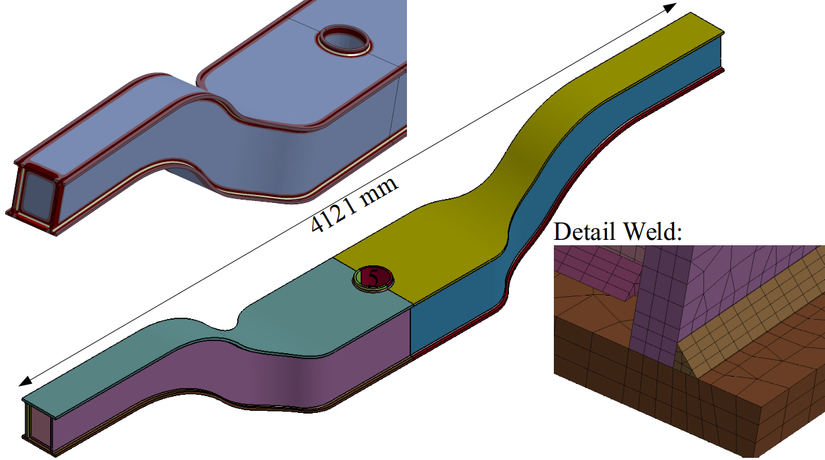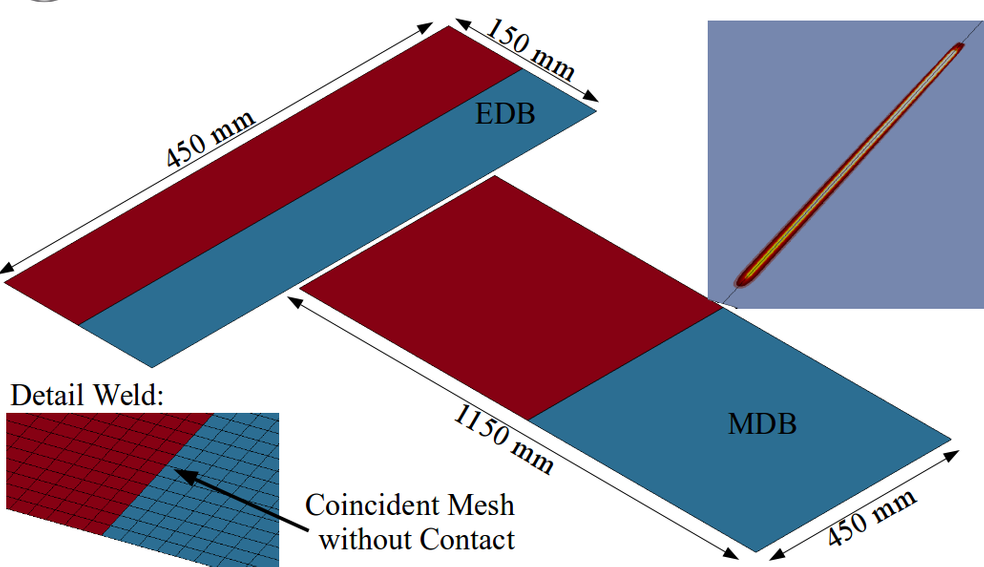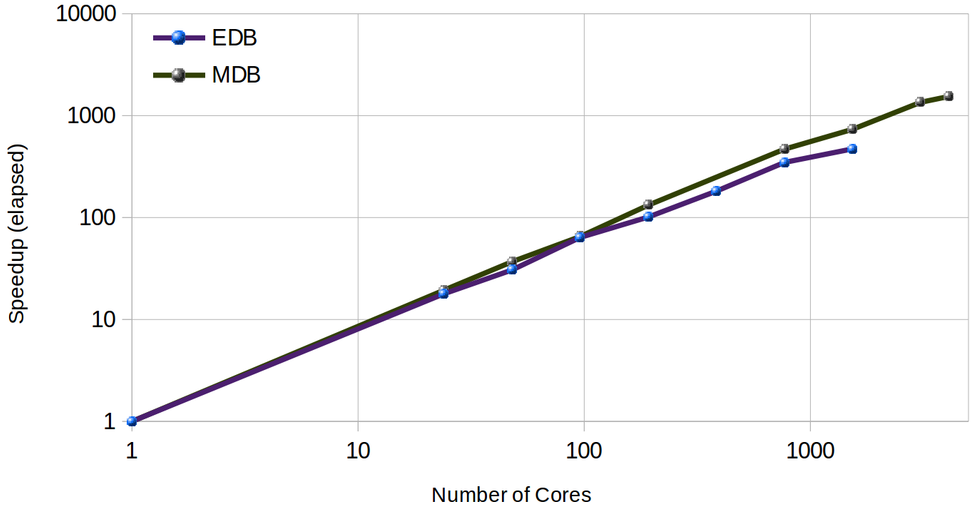SHAPE Project Engineering Office Tobias Loose:
HPC-Welding: Parallelized Welding Analysis with LS-DYNA
Performed by Engineering Office Tobias Loose
Projec partners:
High Performance Computing Welding Analysiss with FabWeld (DynaWeld) and Parallelized LS-DYNA Solvers
Tobias Loose (Ingenieurbüro Tobias Loose)
Martin Bernreuther; Bärbel Große-Wöhrmann; Jörg Hertzer (HLRS)
Uli Göhner (DYNAmore GmbH)
Abstract
As an integral part of the PRACE SHAPE project “HPC Welding” [1] the parallel solvers of LS-DYNA were used by Ingenieurbüro Tobias Loose to perform a welding analysis on the Cray XC40 “Hazel Hen” at the High Performance Computing Center Stuttgart (HLRS).
A variety of test cases relevant for industrial applications have been set up with DynaWeld, a welding and heat treatment pre-processor for LS-DYNA, and run on different numbers of compute cores. The explicit mechanical solver was tested on up to 4080 cores with significant scaling. As far as we know, it was the first time that a welding simulation with the LS-DYNA explicit solver was executed on 4080 cores.
Welding simulation
Welding structure simulation is a highly sophisticated finite element (FE) application [2]. It requires a fine mesh discretization in the weld area so that, in combination with large assemblies and long process times, welding simulation models are very time consuming during the solver run.
HPC with massively parallel processors (MPP) can provide a solution to this issue. In crash applications and forming analysis, it is known that the commercial finite element code LS-DYNA, using the explicit solution algorithm, provides good performance on HPC systems. However, at the authors’ knowledge, performance benchmarking of LS-DYNA for welding simulations have never been performed prior to this study. This project has analyzed the feasibility of welding analysis with parallelized LS-DYNA solvers and its performance.
In this project a Cray-specific LS-DYNA mpp double precision (I8R8) version has been used. The version used, named as revision 103287, was compiled by Cray using the Intel Fortran Compiler 13.1 with SSE2 enabled. The Extreme Scalability Mode (ESM) was used.
In addition, the commercial pre-processor DynaWeld [3,4] is used to set up the welding simulation models for the solver.
Welding tasks
The welding technique covers a very wide range of weld types, process types, clamping and assembly concepts and assembly dimensions. For example: arc weld, laser weld, slow processes, high speed processes, thin sheets, thick plates, single welds, multi-layered welds, unclamped assemblies, fully clamped assemblies, prestress and predeformations. This shall illustrate that there is not only one "welding structure analysis" but a wide range of modelling techniques to cover all variants of welding. In consequence, welding simulation cannot be checked in general for HPC, but every variant of modelling type has to be checked separately.
This project considers several representative modelling variants for welding structure with the aim to cover a range as wide as possible. Fig. 1, for example, shows a model of a gas metal arc welded curved girder. This model covers a complex and large industrial case with many welds. A high speed laser welded thin sheed was the test case for the explicit analysis of the project (Fig. 2). This case was modelled with 200 000 shell elements (EDB) and 1 million shell elements (MDB).

Fig. 1: Model of arc welded curved girder

Fig. 2: Model of high speed laser welded sheet
Results of the project
The results of the test cases with explicit analysis provided the following results: The scaling behaviour in the double-logarithmic scale is linear with nearly constant gradient up to 4080 cores (Fig. 3). Above 96 cores the model MDB with 1 million elements provides a better scaling than the model EDB with 200 000 elements due to the fact that the number of elements per core domain is larger in this case. Regarding the parallel efficiency (the ratio of speedup and number of cores), the larger model has a ratio of 0.45 at 768 cores, and at the highest number of cores (4080) a ratio of 0.4.

Fig. 3: Speedup of elapsed time for the explicit analysis
As a result of the project in general, recommendations for the number of cores in order to obtain the optimal performance are provided and the expected speedup is given. Both the number of the cores and the speedup depend on the model type.
The overall effort for welding analysis on HPC is now much better known with the help of this SHAPE project [1], leading to the ability of a more accurate cost estimate of welding consulting jobs.
This project provides a good basis for further investigations in high performance computing for welding structure analysis.
Acknowledgements
This work was financially supported by the PRACE project funded in part by the EU’s Horizon 2020 research and innovation programme (2014-2020) under grant agreement 653838.
Literature
[1] Loose, T. ; Bernreuther, M. ; Große-Wöhrmann, B. ; Göhner, U.: SHAPE Project Ingenieurbüro Tobias Loose: HPCWelding: Parallelized Welding Analysis with LS-DYNA, SHAPE White Paper, 2016, http://www.prace-ri.eu/IMG/pdf/WP220.pdf
[2] Loose, T.: Einfluß des transienten Schweißvorganges auf Verzug, Eigenspannungen und Stabilitiätsverhalten axial gedrückter Kreiszylinderschalen aus Stahl, Dissertation, Universität Karlsruhe, 2007
[3] Loose, T. ; Mokrov, O. ; Reisgen, U.: SimWeld and DynaWeld - Software tools to set up simulation models for the analysis of welded structures with LS-DYNA. In: Welding and Cutting 15, pp. 168 - 172, 2016
[4] http://www.fabweld.eu ; http://www.dr-loose-gmbh.eu
© Dr. Loose GmbH, alle Rechte vorbehalten | Impressum | Datenschutz | Rechtliche Hinweise